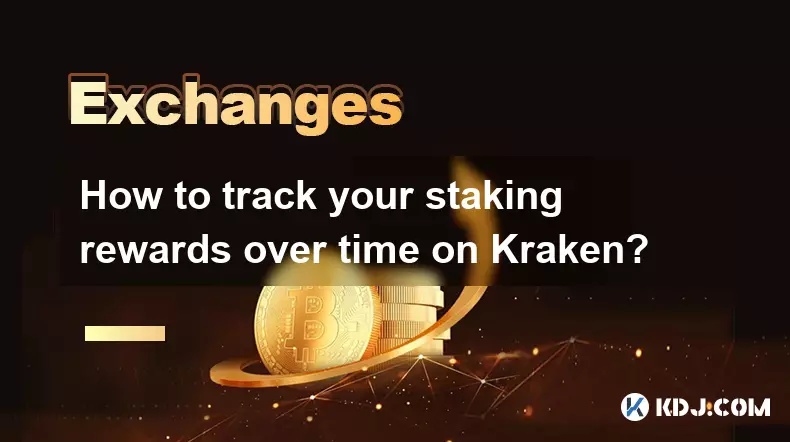-
 bitcoin
bitcoin $112139.774561 USD
-1.82% -
 ethereum
ethereum $3970.329568 USD
-3.85% -
 tether
tether $1.000078 USD
0.01% -
 xrp
xrp $2.611653 USD
-1.08% -
 bnb
bnb $1099.982737 USD
-3.67% -
 solana
solana $193.702075 USD
-3.33% -
 usd-coin
usd-coin $0.999832 USD
0.00% -
 dogecoin
dogecoin $0.193302 USD
-3.68% -
 tron
tron $0.294800 USD
-1.45% -
 cardano
cardano $0.642524 USD
-3.89% -
 hyperliquid
hyperliquid $47.524848 USD
1.27% -
 chainlink
chainlink $17.842256 USD
-2.41% -
 bitcoin-cash
bitcoin-cash $561.265025 USD
1.01% -
 stellar
stellar $0.317292 USD
-2.07% -
 ethena-usde
ethena-usde $0.999303 USD
0.01%
A guide to understanding liquidation price on KuCoin futures
KuCoin's liquidation price is when a leveraged position closes automatically to prevent further losses, calculated using entry price, leverage, and mark price.
Oct 28, 2025 at 04:00 am

What Is Liquidation Price in KuCoin Futures?
1. The liquidation price is the market price at which a trader’s leveraged position gets automatically closed by the exchange to prevent further losses. On KuCoin Futures, this mechanism protects both traders and the platform from negative equity scenarios. When a position moves against the trader and the margin balance falls below the required maintenance level, the system triggers liquidation.
2. This price is calculated based on several variables including entry price, leverage used, position size, and current mark price. It is not fixed and changes dynamically as market conditions shift. Traders using higher leverage will typically have a liquidation price closer to their entry point, increasing the risk of being liquidated during minor price fluctuations.
3. KuCoin uses a tiered maintenance margin system depending on the contract type and leverage. As leverage increases, the allowable drawdown before liquidation decreases. Understanding how these tiers affect your liquidation threshold is essential for managing risk effectively.
4. The liquidation engine relies on the mark price rather than the last traded price to determine when to close positions. This prevents manipulation and ensures fairness. The mark price is derived from external spot indices and funding rates, providing a more accurate reflection of true market value.
5. Once liquidation occurs, the position is closed, and the remaining margin—after fees and potential insurance fund deductions—is returned to the user. In extreme cases, if the loss exceeds the available margin, the insurance fund covers the deficit, though this does not result in additional charges to the trader under normal circumstances.
How to Calculate Your Liquidation Price
1. For long positions, the liquidation price is generally lower than the entry price, while for short positions, it is higher. The formula differs slightly between isolated and cross-margin modes. In isolated margin, only the allocated margin is at risk, making the calculation more straightforward.
2. A simplified version for long positions in isolated mode is: Liquidation Price = Entry Price × (1 - Maintenance Margin Rate / Leverage). For short positions, the formula adjusts to account for upside risk: Liquidation Price = Entry Price × (1 + Maintenance Margin Rate / Leverage).
3. In cross-margin mode, the entire wallet balance acts as collateral, pushing the liquidation price further away from the entry point. However, this also means that adverse movements can erode overall account equity, potentially affecting other open positions.
4. KuCoin provides a built-in liquidation price indicator in the trading interface. While useful, traders should not rely solely on this figure without understanding the underlying mechanics, especially during high volatility or low liquidity periods when slippage may impact execution.
5. Third-party calculators and spreadsheets can help simulate different scenarios. Inputting variables such as entry price, leverage, and position size allows traders to visualize how changes in any parameter influence their liquidation threshold.
Risk Management Strategies Around Liquidation
1. Using lower leverage significantly increases the distance between the entry price and liquidation price. Even with large position sizes, reducing leverage enhances resilience against sudden market swings.
2. Setting stop-loss orders near but above the liquidation price adds an extra layer of protection. While stop-losses are not guaranteed during extreme volatility, they allow traders to exit manually before the system intervenes.
3. Monitoring funding rates and open interest can signal potential squeezes or reversals. High long-to-short ratios may precede sharp downward moves, increasing liquidation risks for long holders.
4. Diversifying across multiple contracts or avoiding full margin utilization helps maintain breathing room. Leaving a portion of margin unused buffers against temporary dips and reduces the likelihood of cascading liquidations.
5. Regularly checking the health of your positions, especially during news events or macroeconomic announcements, enables proactive adjustments. Rebalancing or partially closing positions ahead of expected volatility minimizes exposure.
Frequently Asked Questions
What happens after my position is liquidated on KuCoin?After liquidation, the system closes the position at the best available price. Any remaining margin is credited back to your futures wallet, minus applicable fees. If partial liquidation occurs due to tiered margin rules, only a portion of the position is closed.
Can I get liquidated even if my order hasn't hit the stop-loss?Yes. Stop-loss orders are executed based on market conditions and may not trigger before liquidation, especially during rapid price movements or gaps. The exchange's liquidation engine operates independently of personal stop settings.
Does KuCoin notify users before liquidation?KuCoin displays real-time risk indicators and margin ratio warnings within the trading interface. However, there are no automatic push notifications or emails sent prior to liquidation, so active monitoring is necessary.
Why is my liquidation price different from another exchange?Each exchange uses its own method for calculating maintenance margins, mark prices, and fee structures. Differences in funding mechanisms, leverage tiers, and risk models lead to variations in liquidation levels across platforms.
Disclaimer:info@kdj.com
The information provided is not trading advice. kdj.com does not assume any responsibility for any investments made based on the information provided in this article. Cryptocurrencies are highly volatile and it is highly recommended that you invest with caution after thorough research!
If you believe that the content used on this website infringes your copyright, please contact us immediately (info@kdj.com) and we will delete it promptly.
- Essex Post Office, 5p Coins, and King Charles: A Royal Mint Revelation!
- 2025-10-23 10:30:16
- Waymo's Newark Airport AV Tests: Alphabet's AI Gamble Pays Off?
- 2025-10-23 10:30:16
- King Charles 5p Coins: A Royal Flush in Your Pocket?
- 2025-10-23 10:35:18
- Solana, Crypto Advisory, and Forward Industries: A New York Minute on the Future of Finance
- 2025-10-23 08:51:22
- MAGACOIN: Ethereum Whales Dive into the Hottest Presale of 2025
- 2025-10-23 08:51:22
- Kadena's End of the Road? KDA Token Plummets Amid Project Abandonment
- 2025-10-23 08:55:34
Related knowledge

How to get the highest verification level on Kraken?
Oct 26,2025 at 05:37pm
Understanding Kraken’s Verification Tiers1. Kraken offers multiple verification levels, each unlocking additional features and higher trading limits. ...

What to do if you sent crypto to the wrong address from Kraken?
Oct 28,2025 at 06:55am
Immediate Steps to Take After Sending Crypto to the Wrong Address1. Verify the transaction details immediately through your Kraken account history. Ch...

How to find your referral link on Kraken?
Oct 25,2025 at 12:09pm
Accessing Your Kraken Account Dashboard1. Navigate to the official Kraken website and log in using your registered email and password. Two-factor auth...

How to set up a Global Settings Lock (GSL) on your Kraken account?
Oct 25,2025 at 08:31am
Understanding Global Settings Lock (GSL) on Kraken1. The Global Settings Lock (GSL) is a security feature offered by Kraken to protect user accounts f...

How to avoid high withdrawal fees on Kraken?
Oct 26,2025 at 09:36am
Understanding Kraken's Fee Structure1. Kraken operates on a tiered fee model that depends on the user’s trading volume over the last 30 days. The high...

How to track your staking rewards over time on Kraken?
Oct 26,2025 at 04:54am
Understanding Staking Rewards on Kraken1. Kraken supports staking for various cryptocurrencies, allowing users to earn passive income by locking their...

How to get the highest verification level on Kraken?
Oct 26,2025 at 05:37pm
Understanding Kraken’s Verification Tiers1. Kraken offers multiple verification levels, each unlocking additional features and higher trading limits. ...

What to do if you sent crypto to the wrong address from Kraken?
Oct 28,2025 at 06:55am
Immediate Steps to Take After Sending Crypto to the Wrong Address1. Verify the transaction details immediately through your Kraken account history. Ch...

How to find your referral link on Kraken?
Oct 25,2025 at 12:09pm
Accessing Your Kraken Account Dashboard1. Navigate to the official Kraken website and log in using your registered email and password. Two-factor auth...

How to set up a Global Settings Lock (GSL) on your Kraken account?
Oct 25,2025 at 08:31am
Understanding Global Settings Lock (GSL) on Kraken1. The Global Settings Lock (GSL) is a security feature offered by Kraken to protect user accounts f...

How to avoid high withdrawal fees on Kraken?
Oct 26,2025 at 09:36am
Understanding Kraken's Fee Structure1. Kraken operates on a tiered fee model that depends on the user’s trading volume over the last 30 days. The high...

How to track your staking rewards over time on Kraken?
Oct 26,2025 at 04:54am
Understanding Staking Rewards on Kraken1. Kraken supports staking for various cryptocurrencies, allowing users to earn passive income by locking their...
See all articles










































































